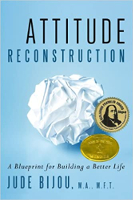
Image by anncapictures
Narrated by Marie T. Russell.
Almost everyone procrastinates. We usually do it to avoid a task that's unpleasant or daunting. Some things are broad and require lots of time and effort, and may involve changing long-held behaviors or beliefs. Others are very specific one-time jobs. When procrastinating starts to interfere with our quality of life by causing us to feel worried, guilty, lazy, panicky, or irresponsible, then it's time to get on with it.
Think taxes, a difficult phone call, or following through on a promise you made in haste or through obligation.
I've laid out some steps to get out of the quicksand of procrastination and reap numerous benefits, which include improved productivity, enhanced mood, less stress, better relationships, a sense of accomplishment, and feeling more successful in life.
Taking constructive action is based on good planning. With many tasks, the initial preparation can take as little as 5 or 10 minutes. More complex actions will take some more thought.
Once you've pinpointed your goal and selected positive thoughts as your companion, you can handle most any situation just by making a step-by-step plan. You can skip dealing with your emotions initially if you're not so inclined, but go back to this concept if you lose momentum on your project.
How to Make a Successful Plan
Step 1. Identify the challenge
Start by writing down the specific task or tasks you've been putting off. It could be having a difficult conversation with a family member, dealing with a bad habit, or finally scheduling that appointment you've been avoiding. Writing down what you are putting off helps you focus on prioritizing what needs to be done. So make your list and then pick out the job that is most important.
Step 2. Pinpoint and deal with your emotions
What's preventing you from diving in to this task? It's typically one or more of three core emotions. Perhaps you're intimidated by all the time and sacrifice (fear). Or you're resentful about having to do this when you think it's not necessary (anger). Or you're bummed that you are trashing yourself so heavily for being unmotivated (sadness). This step helps you see the act of dragging your heels for what it truly is -- an emotional reaction.
It's helpful to know that emotions -- sadness, anger, and fear -- are just pure energy in your body. Look at the word "emotion." It's energy (e) in motion. Take some time in private to express those emotions constructively. By crying to express sadness, punching or yelling into a pillow or stomping around to release the anger, or doing exaggerated shivering for the fear, you give yourself permission to express the emotion.
Be sure that while you are doing this important step, you don't indulge your sabotaging thoughts. Just make sounds. In that way, the energy dissipates and you won't feel stuck. It's like letting steam out of a pressure cooker.
Step 3. Get your head on straight
There are two parts to this process. First, start by getting clear on your goal on the task. Good planning is the foundation of success for most any project. It's helpful to write it down so you have it for ready reference. For example, "I want to get this off my plate." Or "I feel better when I exercise regularly." Having a clear and precise idea of your goal will keep you oriented and help you to stay motivated.
Second, identify sabotaging thoughts that are hanging in the wings, ready to pounce in a weak moment. Then come up with a couple of truths to contradict them. For example if you continually tell yourself "I'll never be able to learn all this," you might instead say to yourself, "I can do this" or "If others can learn it, so can I”. That's a plain and simple truth. To neutralize your frustration at having to do this task, you might say, "I'm doing this for me."
Step 4. Do the actual planning -- break your goal into a series of small, doable steps
You've envisioned the task, dealt with the emotions holding you back, and fixed your destructive thinking. Completing the job requires figuring out a reasonable step-by-step game plan and deciding when you'll begin, and if it involves another person or persons, get clear on what you want to communicate. Write your plan down.
Once you have an outline, step back and imagine obstacles that are likely to pop up along the way. For every scenario, have a tactic ready to help you stick to your plan. You may also want to find someone to support your efforts and with whom you can check in on a regular basis.
Just Do It
When you've completed your preparation, it's time to tackle the job you've put off. Before you do, check in with yourself, and identify any emotions -- whether it's anger, fear, or sadness -- that you are currently feeling. If so, take just a minute or two and release the pent-up emotion in a physical and constructive way. Without the emotional energy dragging you down, you'll feel prepared to take the leap and be amazed how easy it is as you just focus on one step at a time. Just gulp and leap.
As you take action, you might meet with resistance in the form of excuses, bad moods, and discouragement. Meet resistance with tenacity, and continue to deal with any emotions that surface. Throughout the process, it's important to repeat your truths and remember your goal. Say them over and over until they're set in your mind. "I can do this. I'll feel better when I handle this." Any time you are tempted to procrastinate, refocus on the goal.
I call it the "Dwindle Effect" when we lose sight of our goal and start paying attention to our mental justifications to justify why we can abandon our good intentions. My suggestion is when you start to fade, check in with your emotions and express what stands in your way -- sadness, anger, and/or fear.
Also remind yourself of the truths you selected, such as "I'm doing this for me" or remember your goal. This will align you with what you know in your heart is the correct action to take.
If you abandon your good intentions, do the above, then double check to see if you need to modify your plan. Now, once again, you'll be fortified to step onto the battlefield of life.
Appreciate Your Efforts and Accomplishments
Getting through a daunting task is incredibly satisfying. Praise each small accomplishment along the way. You'll feel proud and virtuous when you complete each positive step.
Doing what you're avoiding will simplify your life. You'll feel more energetic. You'll sleep better at night.
* * * * *
P.S. You might like this Netflix movie called "Long Story Short" (2021) if you want to be entertained by the theme of procrastination.
©2022 by Jude Bijou, M.A., M.F.T.
All Rights Reserved.
Book by this Author:
Attitude Reconstruction
Attitude Reconstruction: A Blueprint for Building a Better Life
by Jude Bijou, M.A., M.F.T.
 With practical tools and real-life examples, this book can help you stop settling for sadness, anger, and fear, and infuse your life with joy, love, and peace. Jude Bijou's comprehensive blueprint will teach you to: ? cope with family members' unsolicited advice, cure indecision with your intuition, deal with fear by expressing it physically, create closeness by truly talking and listening, improve your social life, increase staff morale in just five minutes a day, handle sarcasm by visualizing it flying by, carve out more time for yourself by clarifying your priorities, ask for a raise and get it, stop fighting via two easy steps, cure kids' tantrums constructively. You can integrate Attitude Reconstruction into your daily routine, regardless of your spiritual path, cultural background, age, or education.
With practical tools and real-life examples, this book can help you stop settling for sadness, anger, and fear, and infuse your life with joy, love, and peace. Jude Bijou's comprehensive blueprint will teach you to: ? cope with family members' unsolicited advice, cure indecision with your intuition, deal with fear by expressing it physically, create closeness by truly talking and listening, improve your social life, increase staff morale in just five minutes a day, handle sarcasm by visualizing it flying by, carve out more time for yourself by clarifying your priorities, ask for a raise and get it, stop fighting via two easy steps, cure kids' tantrums constructively. You can integrate Attitude Reconstruction into your daily routine, regardless of your spiritual path, cultural background, age, or education.
For more info and/or to order this book, click here. Also available as a Kindle edition.
About the Author

Jude Bijou is a licensed marriage and family therapist (MFT), an educator in Santa Barbara, California and the author of Attitude Reconstruction: A Blueprint for Building a Better Life.
In 1982, Jude launched a private psychotherapy practice and started working with individuals, couples, and groups. She also began teaching communication courses through Santa Barbara City College Adult Education.
Visit her website at AttitudeReconstruction.com/



























